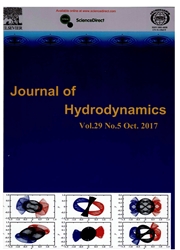

 中文摘要:
中文摘要:
Apart from the direct threat to human lives, the flood waves as a result of the rapid catchment response to intense rainfall, breaches of flood defences, tsunamis or storm surges may induce huge impact forces on structures, causing structural damage or even failures. Most existing design codes do not properly account for these impact forces due to the limited understanding of the underlying physical processes and the lack of reliable empirical formulae or numerical approaches to quantifying them. This paper presents laboratory experiments to better understand the interaction between the extreme flow hydrodynamics and the hydraulic structures and uses the measured data to validate a numerical model. The model solves the two-dimensional shallow water equations using a finite volume Godunov-type scheme for the reliable simulation of complex flow hydrodynamics. New model components are developed for estimating the hydrostatic and hydrodynamic pressure to quantify the flow impact on structures. The model is applied to reproduce two selected experiment tests with different settings and satisfactory numerical results are obtained, which confirms its predictive capability. The model will therefore provide a potential tool for wider and more flexible field-scale applications.
 英文摘要:
英文摘要:
Apart from the direct threat to human lives, the flood waves as a result of the rapid catchment response to intense rainfall, breaches of flood defences, tsunamis or storm surges may induce huge impact forces on structures, causing structural damage or even failures. Most existing design codes do not properly account for these impact forces due to the limited understanding of the underlying physical processes and the lack of reliable empirical formulae or numerical approaches to quantifying them. This paper presents laboratory experiments to better understand the interaction between the extreme flow hydrodynamics and the hydraulic structures and uses the measured data to validate a numerical model. The model solves the two-dimensional shallow water equations using a finite volume Godunov-type scheme for the reliable simulation of complex flow hydrodynamics. New model components are developed for estimating the hydrostatic and hydrodynamic pressure to quantify the flow impact on structures. The model is applied to reproduce two selected experiment tests with different settings and satisfactory numerical results are obtained, which confirms its predictive capability. The model will therefore provide a potential tool for wider and more flexible field-scale applications.
 同期刊论文项目
同期刊论文项目
 同项目期刊论文
同项目期刊论文
 期刊信息
期刊信息
